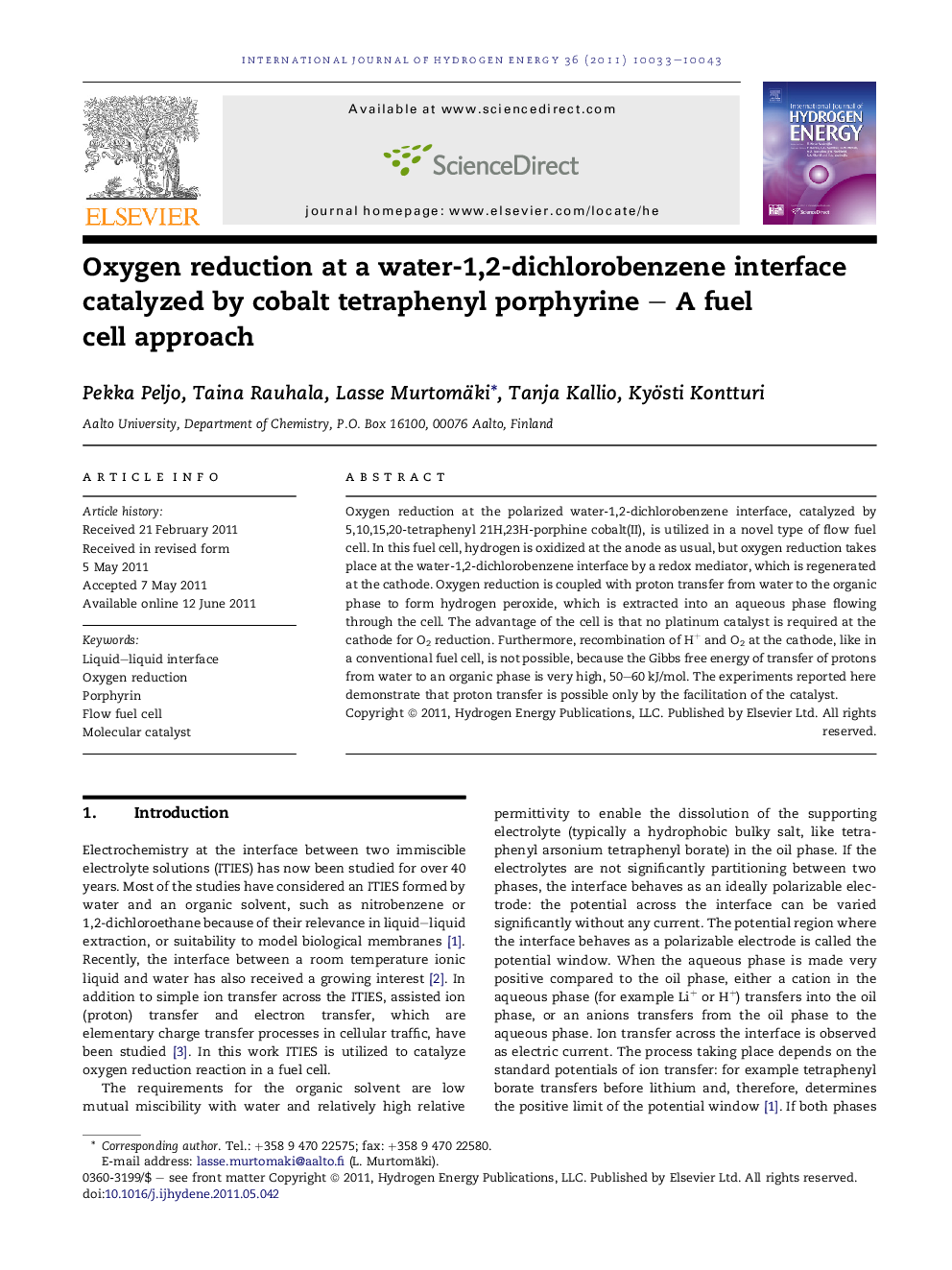| Article ID | Journal | Published Year | Pages | File Type |
|---|---|---|---|---|
| 1278946 | International Journal of Hydrogen Energy | 2011 | 11 Pages |
Oxygen reduction at the polarized water-1,2-dichlorobenzene interface, catalyzed by 5,10,15,20-tetraphenyl 21H,23H-porphine cobalt(II), is utilized in a novel type of flow fuel cell. In this fuel cell, hydrogen is oxidized at the anode as usual, but oxygen reduction takes place at the water-1,2-dichlorobenzene interface by a redox mediator, which is regenerated at the cathode. Oxygen reduction is coupled with proton transfer from water to the organic phase to form hydrogen peroxide, which is extracted into an aqueous phase flowing through the cell. The advantage of the cell is that no platinum catalyst is required at the cathode for O2 reduction. Furthermore, recombination of H+ and O2 at the cathode, like in a conventional fuel cell, is not possible, because the Gibbs free energy of transfer of protons from water to an organic phase is very high, 50–60 kJ/mol. The experiments reported here demonstrate that proton transfer is possible only by the facilitation of the catalyst.
► Cobalt tetraphenyl porphyrin at the water–dichlorobenzene interface catalyzes oxygen reduction to hydrogen peroxide. ► Electron transfer takes place via a redox mediator which is regenerated at the cathode. ► A novel paradigm of a molecular fuel cell utilizing a liquid–liquid interface.
